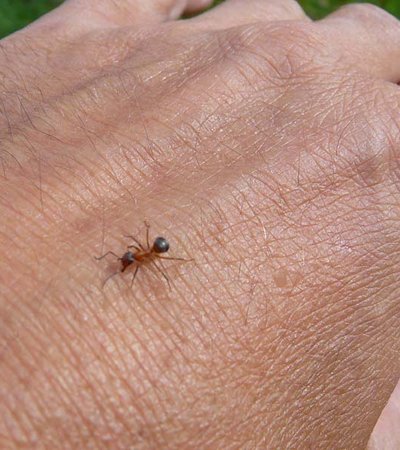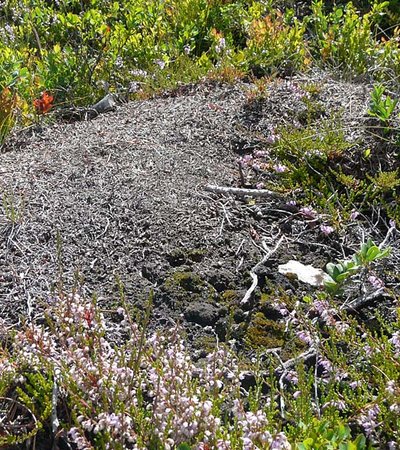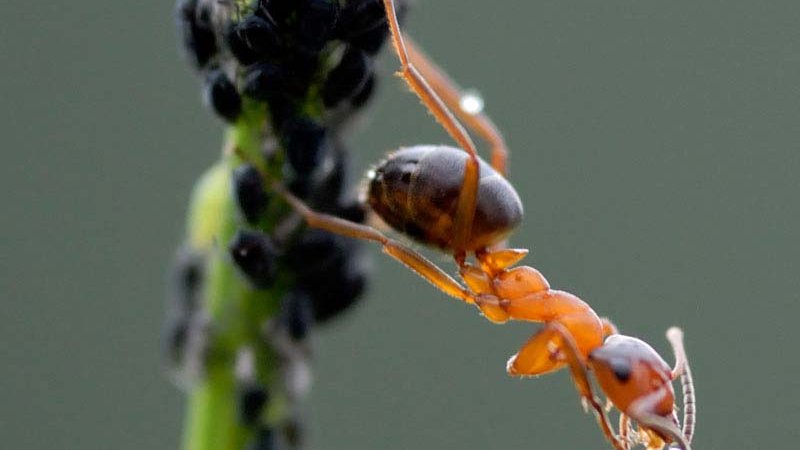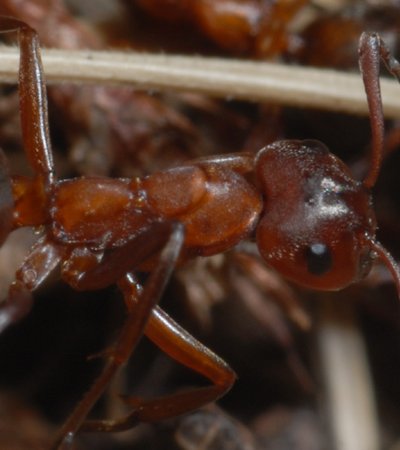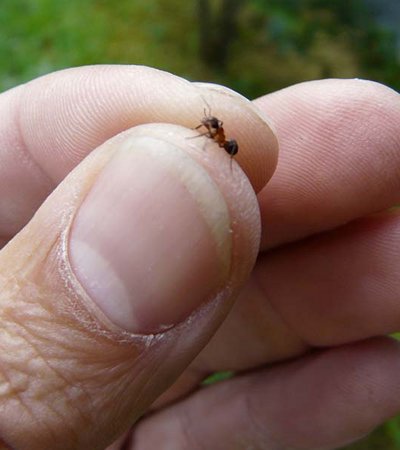(Formica suecica, Formica foreli)
Distribution/habitat
In Ötztal there are a two ant species not found anywhere else in Austria: In inner Ötztal you’ll find the Swedish narrow-headed ant Formica suecica (picture) in sparse Swiss pine stands interspersed with fenlands. The nearest conspecifics are found in West Siberia and Scandinavia. The related species Formica foreli populates warm locations as a steppe-species. You’ll find it in poor grasslands exposed to the sun at the entrance of Ötztal.
Description/characteristics
Like all ants, the narrow-headed ant is also colonial. Female workers incapable of propagation and queens laying several eggs live together in one nest. The workers are around 5–7 mm large, their bodies mostly a reddish colour. The dome-shaped to flattened nests from leaves of dwarf shrubs and grass stalks act as solar collectors and reach surface temperatures of more than 50°C. This allows even snowy, shady slopes to be populated.
Special features
Wood ants, to which the narrow-headed ants belong, play an important role in the ecosystems they populate. They are sustenance for numerous protected bird species such as grouse, black and grey woodpeckers. As predators they themselves prey on numerous insects, often vermin from the surrounding forests. In order to communicate with each other, the ants use chemical substances as messengers. Formic acid sprayed around, for example, serves to alarm nest comrades, fending off predators or hunting for insects.
Endangerment/protection
Both narrow-headed ant species are highly specialised and are now only rarely found. In Austria and Ötztal they are threatened by extinction and are thus protected. The development of ski slopes affects the habitat of the narrow-headed ant and thus threatens its survival.



 Natur im Fokus "Kerbameise"
Natur im Fokus "Kerbameise"
